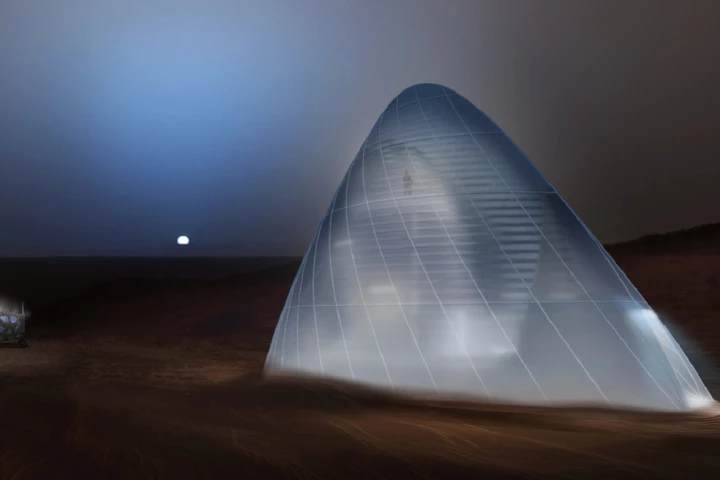Space Travel
-
Several experiments have shown that the EMDrive can generate thrust from basically nothing – in apparent violation of Newton’s Laws of Motion. Unfortunately, a German team has now built and tested their own EMDrive, and found that environmental factors may have been responsible for false positives.
-
There are plenty of strange phenomena in the universe, and fast radio bursts are among the more mysterious. So far, we don't know the source of these high-energy light bursts, but Harvard researchers propose they're caused by planet-sized alien transmitters for powering interstellar spacecraft.
-
At this moment, two Voyager probes are speeding out into the unknown each carrying a "golden record" with information about our planet, our many different languages, our sciences and arts. But if a new theory about life in the universe is correct, those records may never find an audience.
-
NASA’s Journey to Mars mission got a step closer with the successful ground test of the launch booster on the Space Launch System (SLS), the world’s most powerful rocket. It’s the second and final ground test on the booster before a crewless test flight in late 2018 with the Orion spacecraft.
-
Having previously announced that it had signed a launch contract in pursuit of the Google Lunar XPRIZE, Moon Express has now received official verification of the contract from XPRIZE. It is the second team receive verification, after SpaceIL. The news kicks off a new space race.
-
A new study out of MIT says that, although possibly a little out of the way, the Moon would make a worthwhile refueling pit stop for manned missions to Mars by reducing the mass of a launch from Earth by 68 percent.
-
NASA has announced the winners of its 3-D Printed Habitat Challenge Design Competition. The contest sought architectural concepts for how 3D printing might be used to create shelters on the Red Planet. The overall winner, Ice House, would be built using the planet's predicted abundant water supply.
-
One danger of space travel is fast-flying orbital debris piercing the ship's hull. Scientists may be on their way to a solution, however, in the form of a new self-healing material.
-
With NASA and others planning manned Mars missions, a team based in Singapore is already working on a specialized Martian rover that could be used to "mine" for water below the planet's crimson surface.
-
In a historic first, NASA and Russia will launch the One-Year Mission this month in which two astronauts will serve together on the ISS for a year, providing valuable research data to scientists about humankind's weaknesses and risks during extended space travel.
-
The airlock of the ISS was turned into a laboratory last week. In a station with as much space as a 747, that may seem a bit odd, but its purpose was part of a study of the lungs of space travelers by monitoring the effects of one the astronauts' most surprising hazards: dust.
-
On the International Space Station, astronauts recently finished putting the European Space Agency's (ESA) Haptics-1 joystick through its paces. The first force-reflecting joystick in space, its purpose is to improve how robots and humans interact in weightlessness.
Load More











